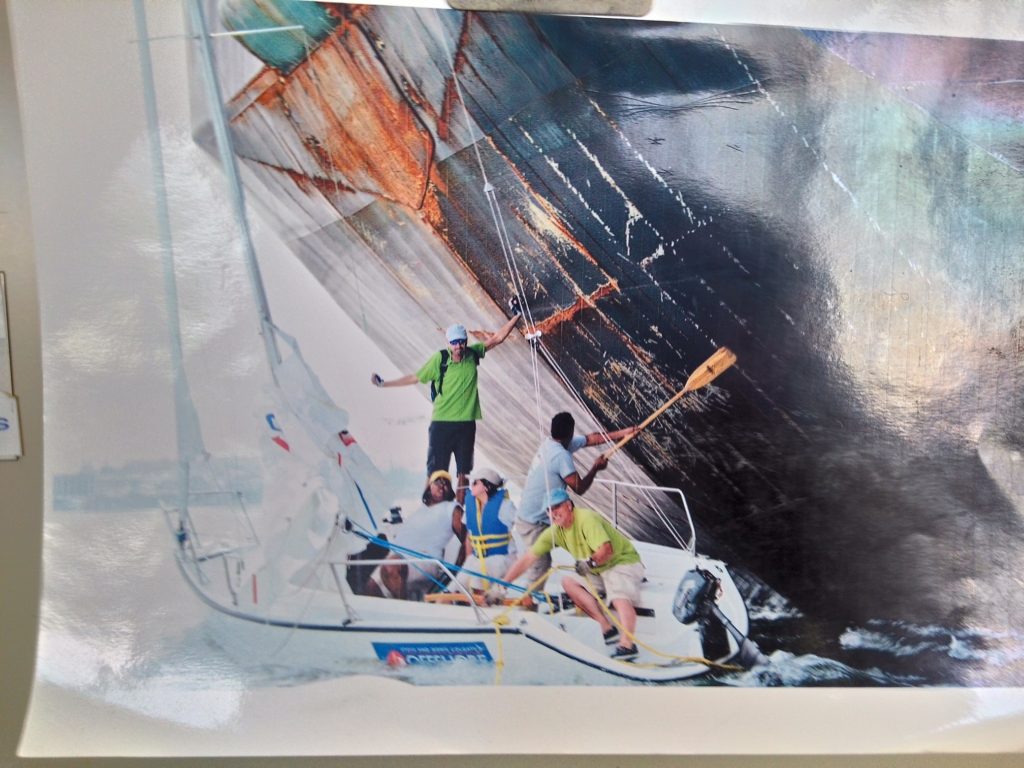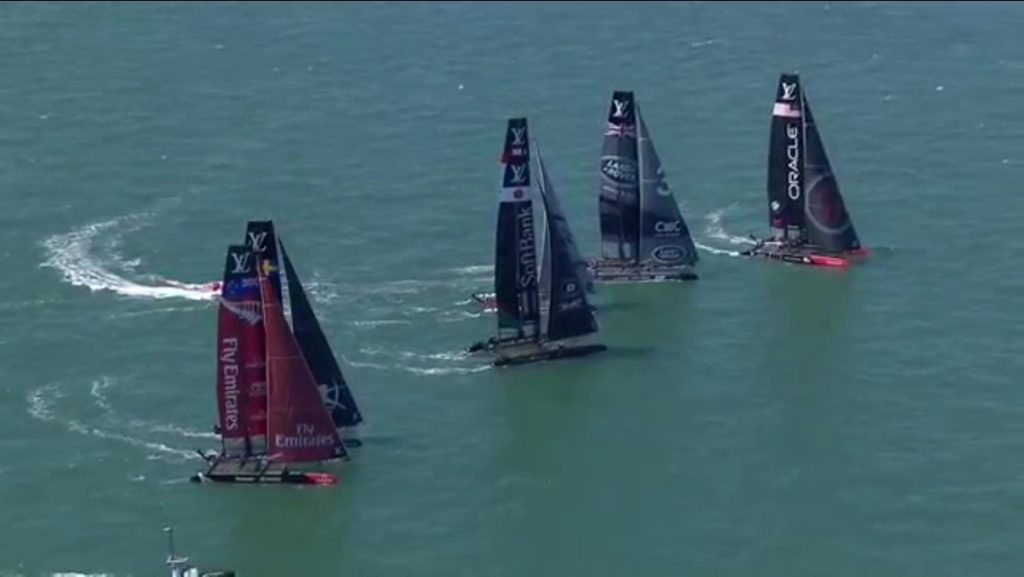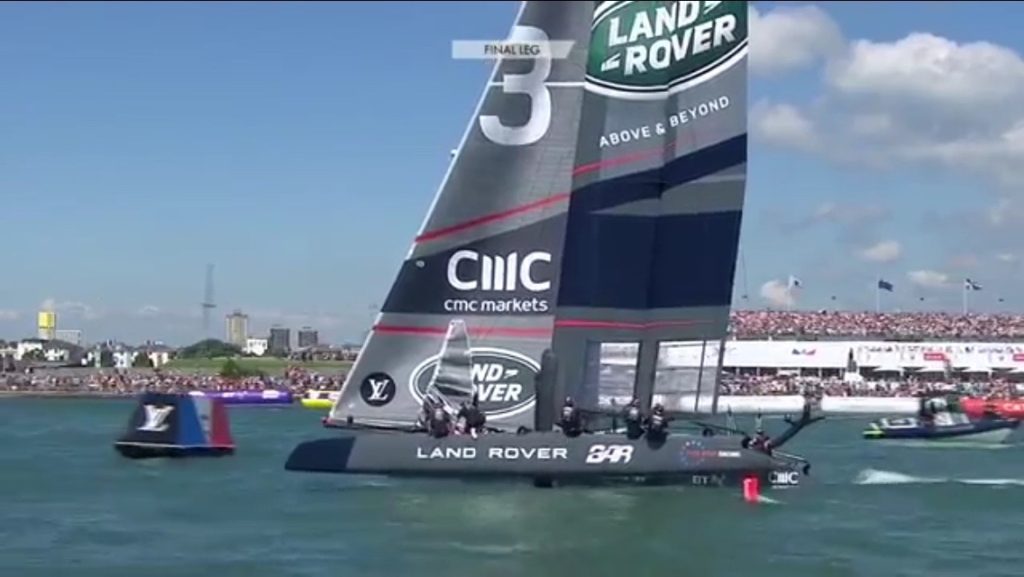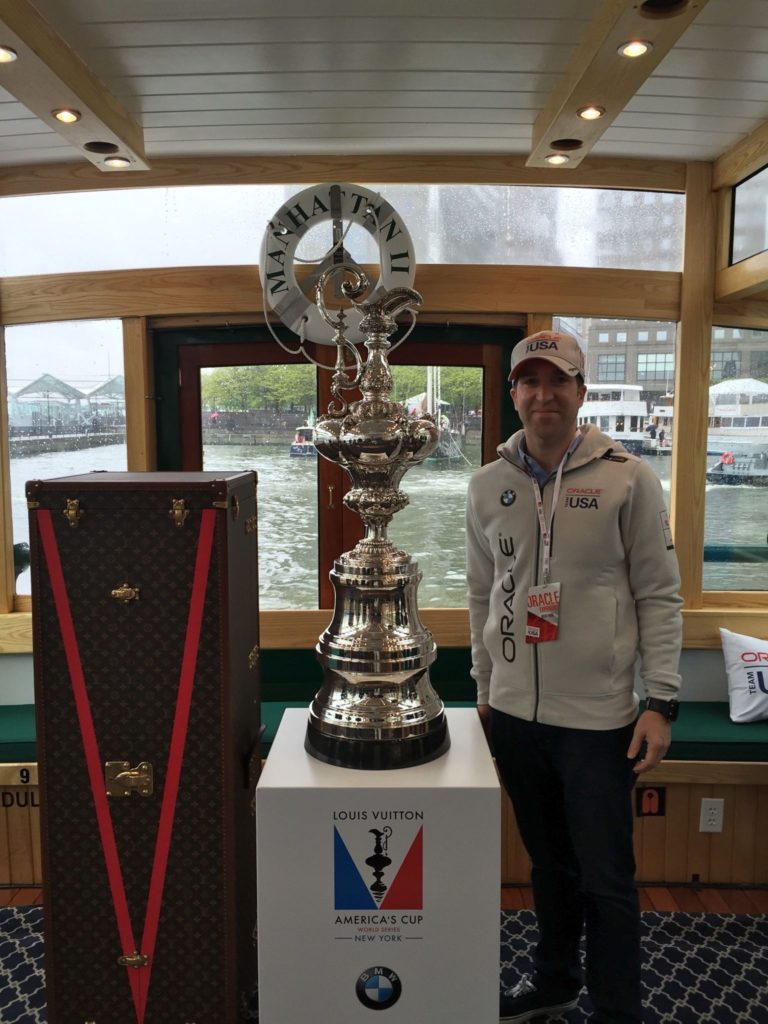So, the America’s Cup came to New York earlier this season, and it was half empty.
The world’s best sailors and boats – and they couldn’t even get a series off on day one? They lost half the weekend. Was it sailable? Eh….
I was at City Island. We had a fine time. But on the Hudson, they had strong enough currents to make it unsailable. On Sunday, they were sometimes standing still after maneuvers. Sure, the wind was a little light. But not THAT light.
This is just one example. It’s an historical conundrum. Why do so many people (try to) learn to sail in NY Harbor and the Hudson, when pro sailors can’t figure it out?
- Perceived proximity
- Marketing hype
- The ? factor (as in we just don’t get it)
Don’t take our word for it! This shot, and the following article excerpts, sum it up nicely. One of our instructors recently took this picture of a picture. It was on the wall of another sailing school (down Mid-Atlantic way…)

And now, back to the America’s Cup from earlier this summer…
Read the following article excerpts, or the whole article via link at bottom, and imagine trying to learn to sail or even enjoy new skills (if even acquired) in NY Harbor and the Hudson.
-from Extreme Sailing to Meet Extreme Conditions on Hudson by Cory Kilgannon (New York Times, May 5, 2016)
nb: we’ve inserted some editorial notes here and there, indented like this.
“Holding a world-class sailing race, part of the America’s Cup series, off Battery Park City may make for spectacular shoreline viewing, but it is not easy for organizers or racers, who may prefer a location farther offshore with easier winds to navigate and little interference from other boat traffic.”
“The race poses daunting logistical challenges. There is the harbor traffic — ferries, tugboats, barges and other large vessels that ply the Hudson — that must be diverted, along with a designated area for the more than 700 personal recreational boats expected to anchor for the event.”
…not to mention Circle Line, the Shark Speedboat Thrill Ride, various large booze cruise boats, etc.
“Then there is the rapid current of the Hudson River as well as effects on the wind by the tall buildings flanking the racecourse, both in Manhattan and on the other side of the river in Jersey City.”
The current is so strong that anyone who’s spent a little time sailing here has had their boat ‘in the groove,’ going full tilt, only to look at the shoreline and see that they’re just standing still. All boats down there need engines to deal with this and usually get underway and stop under power. Doesn’t teach how to do it under sail…
The wind sheers and downdrafts created by the buildings are neither pleasant nor productive.
“Organizers have met for months with New York City officials and law enforcement agencies and other parties. Commercial shipping companies have agreed to work around the race times, and a separate lane will be established near the shoreline for ferries and other vessels.”
“For sailors, a major challenge will be the Hudson’s wind and current conditions. To adapt to the strong tidal current, which during the race will be running south with the outgoing tide, organizers are using heavier anchors and longer chains than usual to secure the race buoys, which are called marks.”
“As for the air, the canyon of high-rises in Manhattan’s financial district and in Jersey City could negatively affect the all-important wind that is the sailor’s fuel.”
“For sailors, a major challenge will be the Hudson’s wind and current conditions. To adapt to the strong tidal current, which during the race will be running south with the outgoing tide, organizers are using heavier anchors and longer chains than usual to secure the race buoys, which are called marks.”
“Practice races on Friday will be filmed for use in case conditions on Saturday or Sunday prevent the regatta.”
Welcome to Manhattan, the Mecca of metropolitan Sailing!.. NOT.
Here’s a link to the entire article with a few pics.



